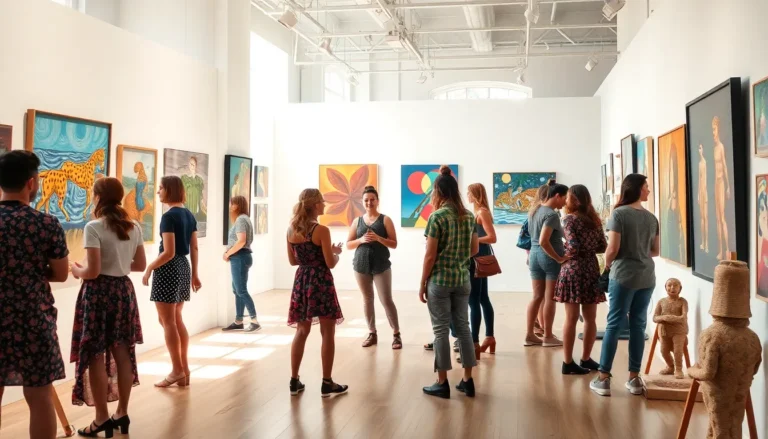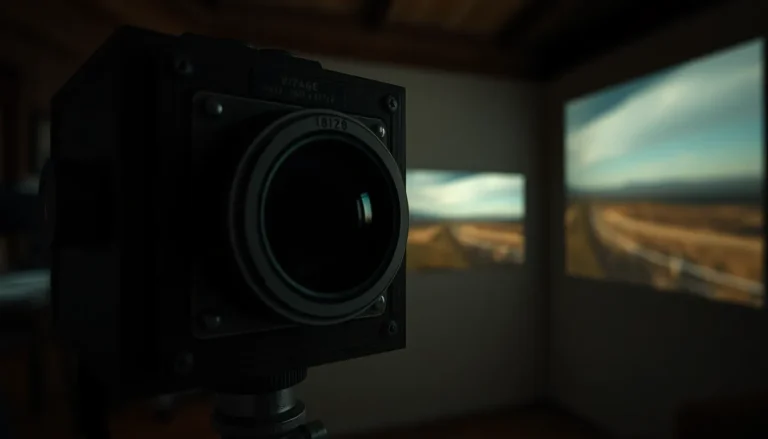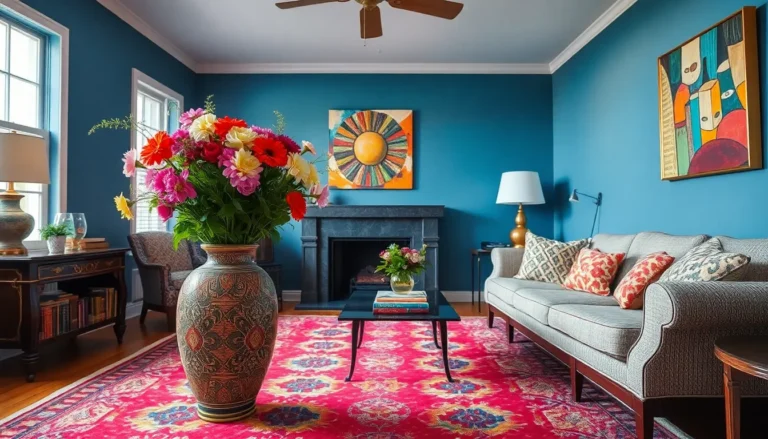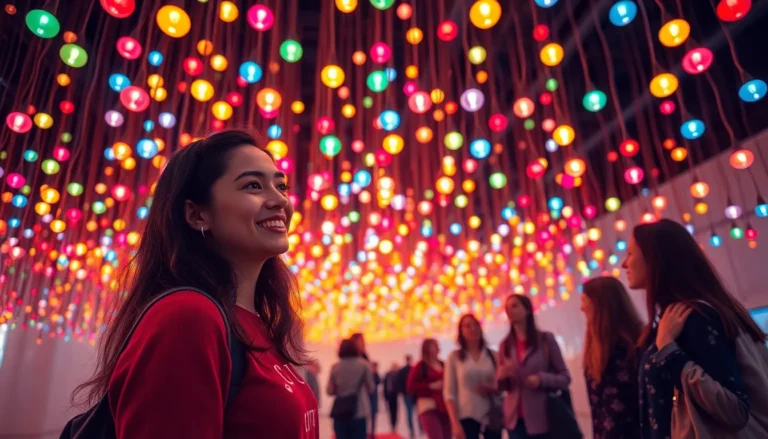Table of Contents
ToggleIn a world where everyone’s got a smartphone and an Instagram account, art commissions are the secret sauce that transforms ordinary walls into extraordinary galleries. Imagine having a piece that speaks to your soul, crafted just for you by a talented artist who gets your vibe. It’s like having a custom-made suit, but for your living room.
Understanding Art Commissions
Art commissions represent a personalized approach to acquiring unique works. Clients seek specific themes or subjects, allowing artists to create tailored pieces that reflect individual preferences. Customization enhances the connection between the artwork and the space it occupies.
Commissioning art involves collaboration between the artist and the client. Artists often provide sketches or concept ideas to ensure alignment with the client’s vision. Communication remains essential throughout the process, allowing for adjustments as needed.
Pricing for art commissions varies based on several factors including size, complexity, and artist experience. Established artists may charge higher fees due to their reputation and skill level. Emerging artists might offer lower prices, creating opportunities for patrons to discover new talent.
Timelines can differ for each project. Projects may take several weeks to months, depending on the details involved. Clients typically receive regular updates from artists to track progress and maintain engagement.
Expectations around artwork delivery should be clear from the beginning. Clients should discuss delivery methods, framing options, and installation assistance. Specifying these details helps prevent misunderstandings and enhances satisfaction with the final product.
Overall, art commissions provide an opportunity for individuals to acquire pieces that resonate personally and fit seamlessly into their environments. Those interested in commissioning art can explore various styles and mediums, broadening their artistic collections with meaningful works.
Types of Art Commissions

Art commissions can take various forms, each catering to different needs and contexts. Understanding these types helps clients choose the right approach for their artistic aspirations.
Private Commissions
Private commissions focus on personalized art created for individual clients. These pieces reflect specific themes, subjects, or styles that resonate with the client’s vision. Artists often encourage close collaboration, presenting sketches for client feedback. The unique nature of private commissions guarantees a tailored experience, allowing clients to engage deeply with the creative process. Costs may vary significantly based on the artist’s experience, complexity of the work, or size. Many artists aim to deliver artworks that not only enhance personal spaces but also evoke strong emotions.
Public Commissions
Public commissions involve creating art for community spaces, parks, or institutions. They often aim to reflect local culture or history, enhancing the public’s connection to their environment. Artists usually submit proposals, showcasing their ideas and how they align with community values. These projects can encourage community engagement and pride, making art accessible to broader audiences. Budgets for public commissions often come from municipal grants or donations, promoting investment in local art initiatives. By incorporating public art, communities can foster a vibrant atmosphere that celebrates creativity.
Collaborative Projects
Collaborative projects unite multiple artists or disciplines, resulting in innovative and diverse artworks. These commissions often focus on themes that encourage teamwork and shared vision. Final pieces may emerge from combining different artistic styles, materials, or mediums, fostering creativity within the artistic community. Artists work closely together, sharing ideas and resources throughout the process. Success in collaborative projects hinges on clear communication and mutual respect among participants. By embracing collaboration, artists can create dynamic works that hold greater depth and meaning.
The Process of Commissioning Art
Commissioning art requires thoughtful planning and clear communication between the artist and client. The process typically begins with finding an artist whose style aligns with the client’s vision.
Finding an Artist
Clients explore various platforms, including social media, galleries, and artist websites, to discover potential artists. Evaluating previous works helps assess compatibility with personal tastes. Referrals from friends or acquaintances offer additional insight and recommendations. Communicating with multiple artists can provide a feel for their approach and availability. This stage allows clients to assemble a shortlist of artists to engage in discussions about the commission.
Setting Expectations
Establishing clear expectations is vital for a smooth commissioning process. Clients should outline their desired themes, styles, and dimensions upfront. Discussing deadlines and potential timelines ensures everyone is on the same page. Artists often provide rough sketches to confirm that concepts meet client expectations. Addressing concerns such as framing and delivery methods prevents misunderstandings later on. Open dialogue fosters trust and keeps the project moving smoothly.
Contract and Payment
Developing a contract solidifies the agreement between the client and the artist. The document should specify the project’s details, including scope, deadlines, and payment terms. Payment structures often involve deposits and final payments, tailored to the project’s complexity. Clients might also discuss payment methods to ensure preferences align with the artist’s options. Clear terms protect both parties, ensuring satisfaction with the outcome.
Benefits of Art Commissions
Art commissions provide unique advantages that enhance the experience of acquiring artwork. They foster a personal connection between the artist and the client, leading to pieces that reflect individual stories and preferences. Each commission allows clients to specify themes and subjects, making the resulting artwork deeply meaningful.
Customization stands out as a significant benefit. Artists can adapt their styles to create tailored pieces that seamlessly integrate into the client’s environment. Clients often collaborate directly with the artist, which ensures that the final product aligns with their vision.
Clear communication throughout the process maintains engagement and satisfaction. Artists typically offer sketches or concepts for feedback, allowing adjustments along the way. Regular updates keep clients informed, making the commissioning journey enjoyable.
Understanding pricing helps clients budget effectively. Fees often vary based on size, complexity, and the artist’s experience. Established artists may command higher prices, reflecting their expertise and demand in the market.
Timelines can also be managed effectively. Projects may range from several weeks to months based on various factors. Discussing timelines up front helps set expectations and avoid frustration.
Lastly, art commissions often result in unique works that stand out in any collection. Each piece tells a story and holds personal significance, making them valuable to the client and their space. Collectively, these benefits highlight the appeal of commissioning art in today’s creative landscape.
Challenges in Art Commissions
Art commissions come with distinct challenges that can affect both the client and the artist. Miscommunication and artistic differences often emerge as significant obstacles.
Miscommunication
Miscommunication often arises when expectations aren’t clearly defined. Artists and clients may interpret ideas differently, leading to misunderstandings. Clients might envision a specific theme, while the artist could interpret it in another way. Regular check-ins throughout the commissioning process can clarify intentions and progress. Establishing open lines of communication fosters a collaborative atmosphere, ensuring that both parties remain aligned. Contracts can serve as essential tools, delineating project scope and deliverables to minimize confusion.
Artistic Differences
Artistic differences can pose challenges during collaborations. Artists have distinct styles and perspectives, which may not always align with client preferences. Feedback mechanisms play a crucial role in addressing these discrepancies. Clients should be prepared to articulate their vision precisely, while artists must remain receptive to adjustments. Conflict may arise when subjective tastes clash, potentially stalling the project. Collaboration thrives on mutual respect and understanding, allowing both parties to navigate through artistic variances effectively.
Art commissions offer a unique opportunity for individuals to express their personal style and enhance their living spaces. By collaborating closely with artists, clients can create custom pieces that resonate deeply and reflect their individual stories. The process fosters a meaningful connection between the artist and the client, ensuring that the final artwork is not only visually appealing but also personally significant.
While challenges like miscommunication and artistic differences may arise, maintaining open lines of communication can lead to successful outcomes. With careful planning and clear expectations, art commissions can transform ordinary spaces into extraordinary galleries that showcase creativity and personal expression. Embracing this trend allows individuals to invest in art that truly speaks to them, making it a worthwhile endeavor in today’s artistic landscape.







